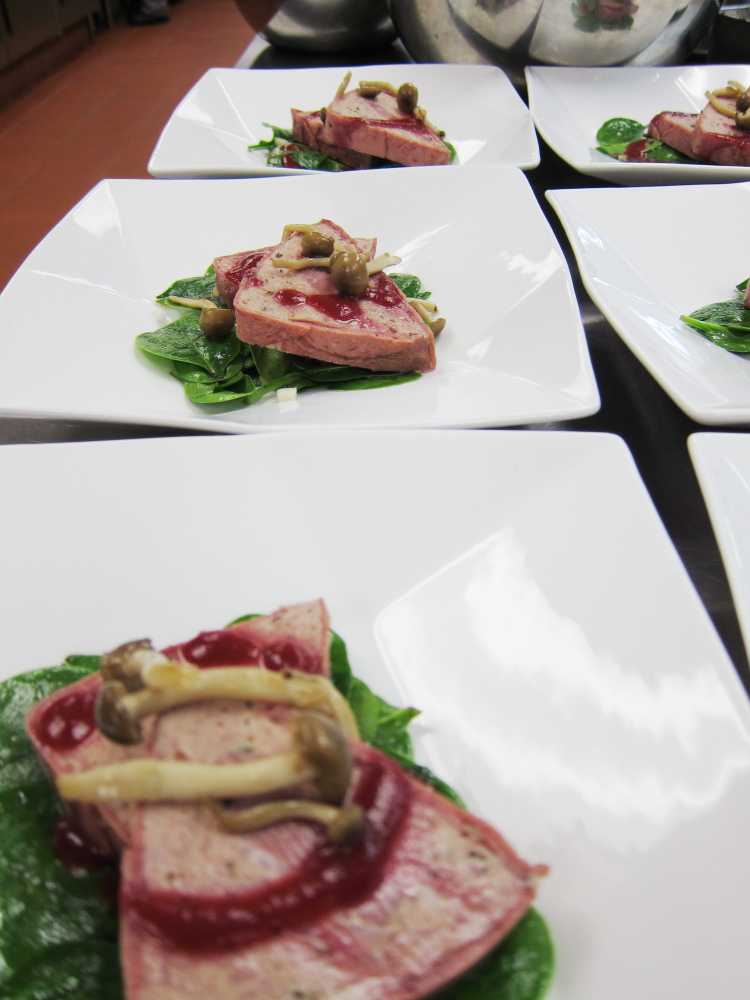 Food Studies features the voices of volunteer student bloggers from a variety of different food- and agriculture-related programs at universities around the world. You can explore the full series here.
Food Studies features the voices of volunteer student bloggers from a variety of different food- and agriculture-related programs at universities around the world. You can explore the full series here.
Who wouldn’t be turned off by forcemeat? The name alone sounds pretty gross. When it was time to focus on these cold, repurposed meat preparations in my garde manger class, I just couldn’t understand why people in ancient history would have tortured themselves with pâtes, mousses, galantines, and headcheese. (“Garde mange” covers most of the cold foods made in today’s restaurant kitchens — from charcuterie, to hors d’oeuvre, salads, cold sauces, sandwiches … many of the foods traditionally served at receptions and cocktail events). To top it off, most forcemeats often took three to four days to prepare and everything we produced tasted like one of SPAM’s relatives, with none of the wonderful qualities roasting or grilling can bring to food. Think about it, would you rather eat a piece of cold, poached, ground meat, or a tender piece of roasted chicken with crispy, golden brown skin?
Then I read Michael Ruhlman’s The Making of a Chef and I realized the beauty of garde manger and forcemeat. Ruhlman quotes Chef Eve Felder, his instructor during his stint in the Culinary Institute of America’s garde manger class, who calls forcemeat “a liberator.” Cold and often lined with aspic, forcemeat is the scaffold of garde manger, whose literal English term is to protect what we eat by liberating leftovers that would soon go bad. A heavy reliance on spices and herbs are then necessary to enhance the flavor of the meat.
Although I’ve had a hard time approaching forcemeat with quite so such enthusiasm, it made a lot of sense that leftover meat should be utilized this way — as, say, an artful pâte en croute — rather than being wasted.
Sometimes it seems a little atrocious how much food we waste, even at culinary school. In Singapore, where I’m in school, food waste ranks third after paper and plastics, while in the U.S., it’s over 40 percent (according to Jonathan Bloom, author of American Wasteland). Nonetheless, at first it was hard to understand garde manger and its emphasis on the total utilization of foods that were, more often than not, thrown away. But Chef Felder explained that because the product usually came from trimmings, garde manger was also about creativity and ingenuity with basic ingredients — essential qualities for a good chef. For starters, instead of discarding the little pieces of salmon garnered after creating five-ounce filets, we were shown how to make a salmon mousse that we served on pastry shells for a cocktail reception.
At the end of the day, these kinds of preparations for meat are important as a way to use the whole animal (or what many chefs call “nose-to-tail” cooking), and it makes much more sense to me than the slash and burn nature of most cooking on the line.




